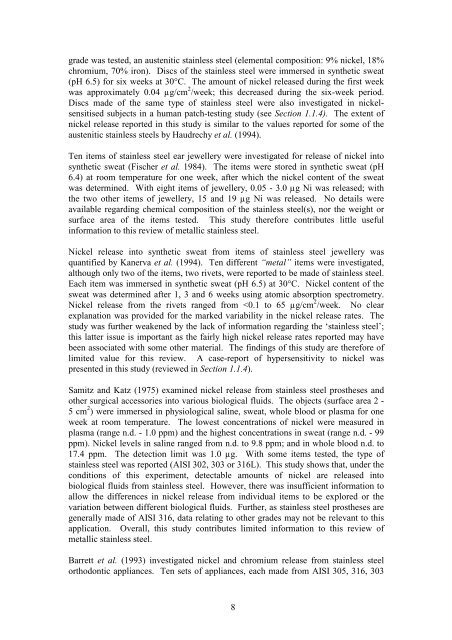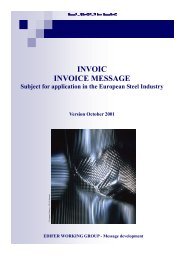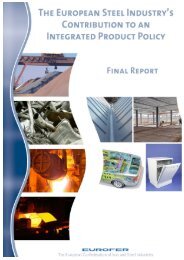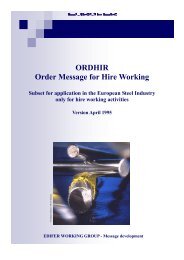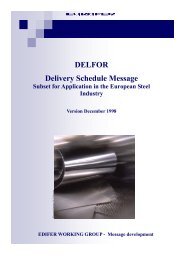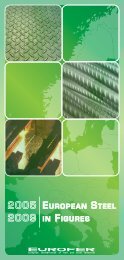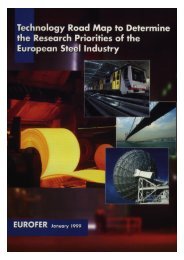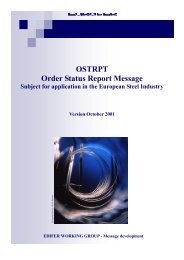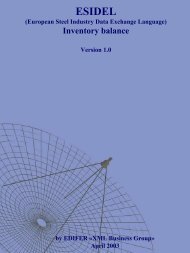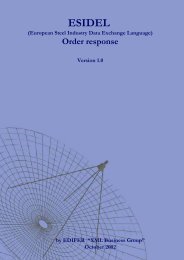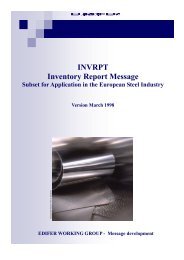manufacture, processing and use of stainless steel - International ...
manufacture, processing and use of stainless steel - International ...
manufacture, processing and use of stainless steel - International ...
Create successful ePaper yourself
Turn your PDF publications into a flip-book with our unique Google optimized e-Paper software.
grade was tested, an austenitic <strong>stainless</strong> <strong>steel</strong> (elemental composition: 9% nickel, 18%<br />
chromium, 70% iron). Discs <strong>of</strong> the <strong>stainless</strong> <strong>steel</strong> were immersed in synthetic sweat<br />
(pH 6.5) for six weeks at 30°C. The amount <strong>of</strong> nickel released during the first week<br />
was approximately 0.04 µg/cm 2 /week; this decreased during the six-week period.<br />
Discs made <strong>of</strong> the same type <strong>of</strong> <strong>stainless</strong> <strong>steel</strong> were also investigated in nickelsensitised<br />
subjects in a human patch-testing study (see Section 1.1.4). The extent <strong>of</strong><br />
nickel release reported in this study is similar to the values reported for some <strong>of</strong> the<br />
austenitic <strong>stainless</strong> <strong>steel</strong>s by Haudrechy et al. (1994).<br />
Ten items <strong>of</strong> <strong>stainless</strong> <strong>steel</strong> ear jewellery were investigated for release <strong>of</strong> nickel into<br />
synthetic sweat (Fischer et al. 1984). The items were stored in synthetic sweat (pH<br />
6.4) at room temperature for one week, after which the nickel content <strong>of</strong> the sweat<br />
was determined. With eight items <strong>of</strong> jewellery, 0.05 - 3.0 µg Ni was released; with<br />
the two other items <strong>of</strong> jewellery, 15 <strong>and</strong> 19 µg Ni was released. No details were<br />
available regarding chemical composition <strong>of</strong> the <strong>stainless</strong> <strong>steel</strong>(s), nor the weight or<br />
surface area <strong>of</strong> the items tested. This study therefore contributes little <strong>use</strong>ful<br />
information to this review <strong>of</strong> metallic <strong>stainless</strong> <strong>steel</strong>.<br />
Nickel release into synthetic sweat from items <strong>of</strong> <strong>stainless</strong> <strong>steel</strong> jewellery was<br />
quantified by Kanerva et al. (1994). Ten different “metal” items were investigated,<br />
although only two <strong>of</strong> the items, two rivets, were reported to be made <strong>of</strong> <strong>stainless</strong> <strong>steel</strong>.<br />
Each item was immersed in synthetic sweat (pH 6.5) at 30°C. Nickel content <strong>of</strong> the<br />
sweat was determined after 1, 3 <strong>and</strong> 6 weeks using atomic absorption spectrometry.<br />
Nickel release from the rivets ranged from


